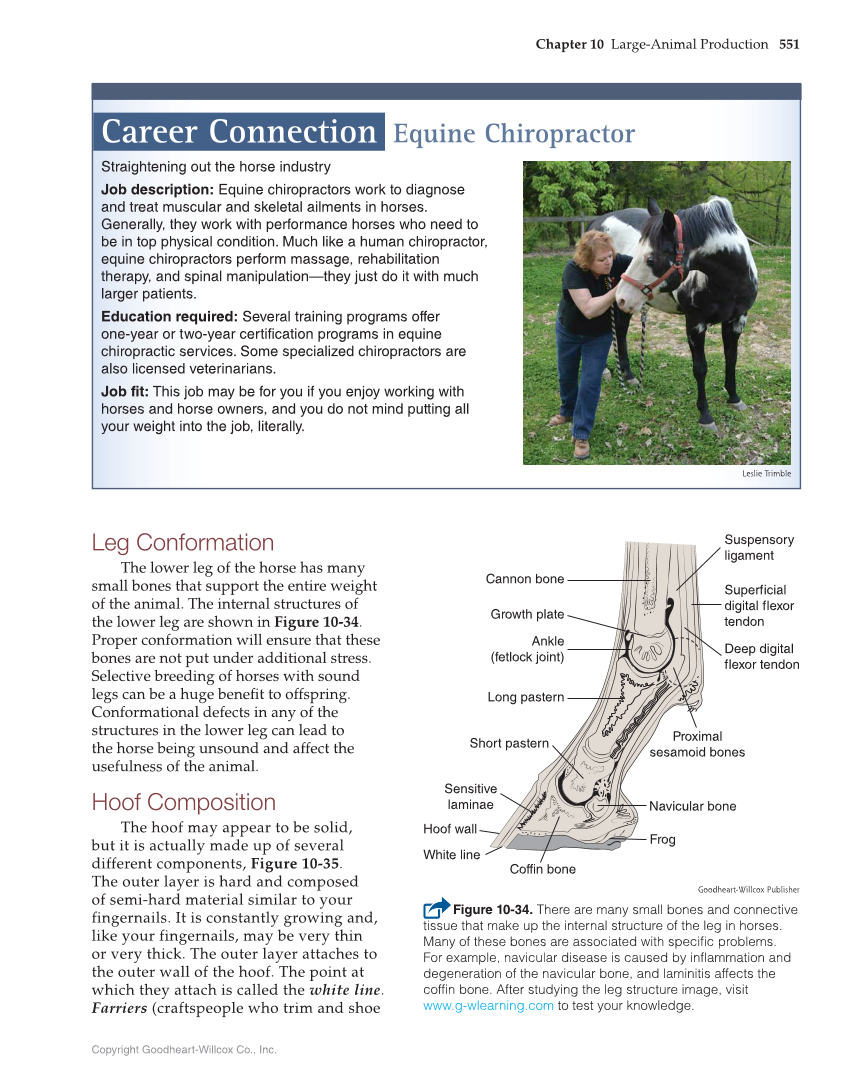Leg Conformation The lower leg of the horse has many small bones that support the entire weight of the animal. The internal structures of the lower leg are shown in Figure 10-34. Proper conformation will ensure that these bones are not put under additional stress. Selective breeding of horses with sound legs can be a huge benefit to offspring. Conformational defects in any of the structures in the lower leg can lead to the horse being unsound and affect the usefulness of the animal. Hoof Composition The hoof may appear to be solid, but it is actually made up of several different components, Figure 10-35. The outer layer is hard and composed of semi-hard material similar to your fingernails. It is constantly growing and, like your fingernails, may be very thin or very thick. The outer layer attaches to the outer wall of the hoof. The point at which they attach is called the white line. Farriers (craftspeople who trim and shoe Career Connection Straightening out the horse industry Job description: Equine chiropractors work to diagnose and treat muscular and skeletal ailments in horses. Generally, they work with performance horses who need to be in top physical condition. Much like a human chiropractor, equine chiropractors perform massage, rehabilitation therapy, and spinal manipulation—they just do it with much larger patients. Education required: Several training programs offer one-year or two-year certification programs in equine chiropractic services. Some specialized chiropractors are also licensed veterinarians. Job fit: This job may be for you if you enjoy working with horses and horse owners, and you do not mind putting all your weight into the job, literally. Equine Chiropractor Cannon bone Suspensory ligament Superficial digital flexor tendon Deep digital flexor tendon Proximal sesamoid bones Navicular bone Frog Growth plate Ankle (fetlock joint) Long pastern Short pastern Sensitive laminae White line Hoof wall Coffin bone Goodheart-Willcox Publisher Figure 10-34. There are many small bones and connective tissue that make up the internal structure of the leg in horses. Many of these bones are associated with specific problems. For example, navicular disease is caused by inflammation and degeneration of the navicular bone, and laminitis affects the coffin bone. After studying the leg structure image, visit www.g-wlearning.com to test your knowledge. Leslie Trimble Chapter 10 Large-Animal Production 551 Copyright Goodheart-Willcox Co., Inc.
